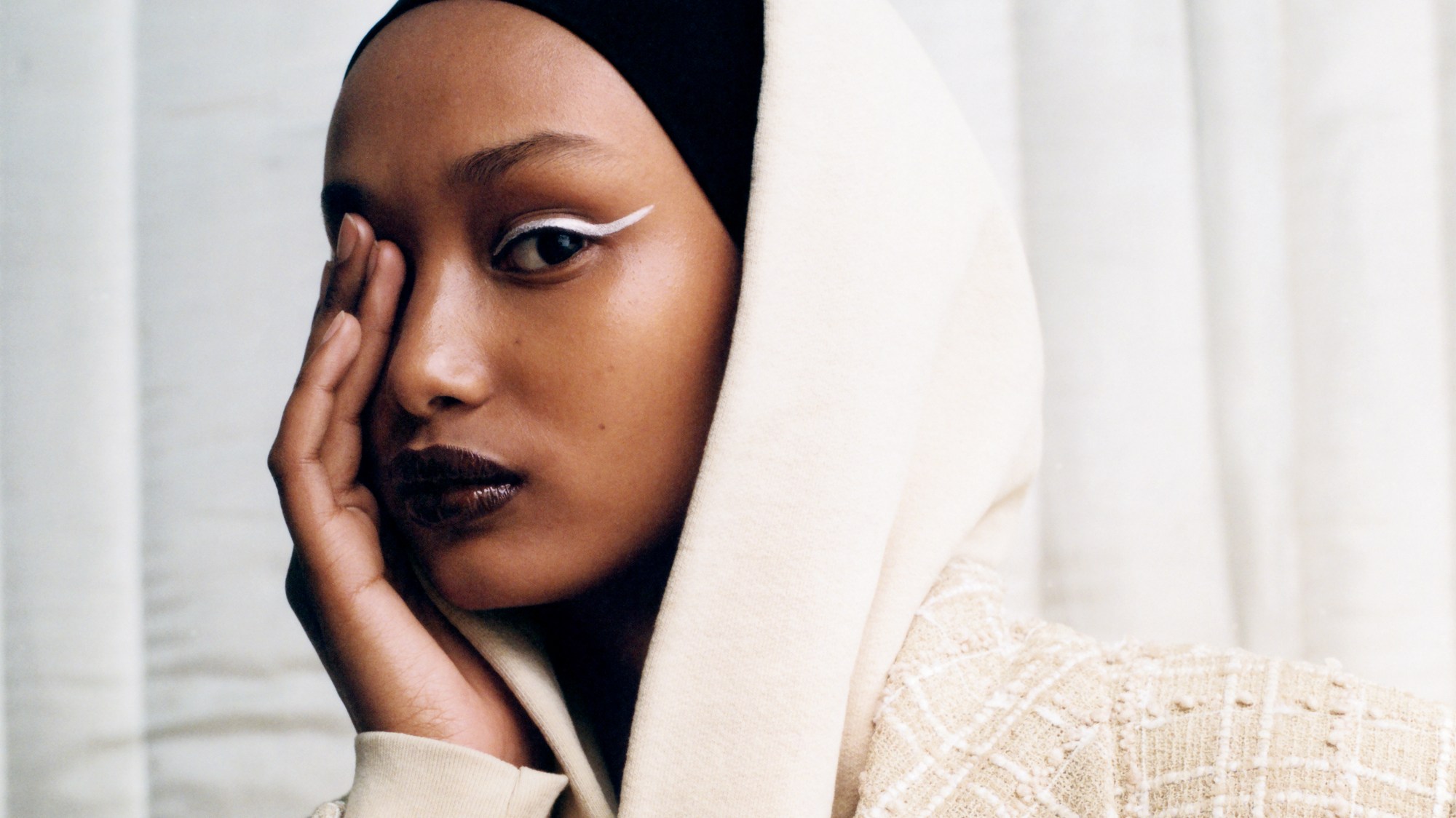This story originally appeared in i-D’s The Voice of a Generation Issue, no. 356, Summer 2019. Pre-order your copy here.
The Midwestern state of Iowa isn’t the first place that springs to mind when you think about Muslim identity in America. Yet among its lush hills resides the country’s oldest Muslim community, with a quintessentially American story: in 1885 Muslims seeking religious freedom came to the USA from Syria and Lebanon, before finally settling in the Iowan city of Cedar Rapids. Coincidentally, in the same year, a young man named Friedrich Trump, attracted by the gold rush, left Germany and emigrated to Queens, New York.
In 2009, over a century later, Ugbad Abdi and her family began their new life in Iowa, finding peace and stability following nine years in a Kenyan refugee camp after fleeing Somalia’s ceaseless civil war. Aside from Native Americans, the stories of every single person in America began somewhere else. If it wasn’t for immigrants in search of new opportunities, there would be no America. Yet Friedrich’s grandson, Donald — the country’s current President — has taken any opportunity to scapegoat migrants, attempting to enact various travel bans on refugees from Muslim-majority countries like Somalia.
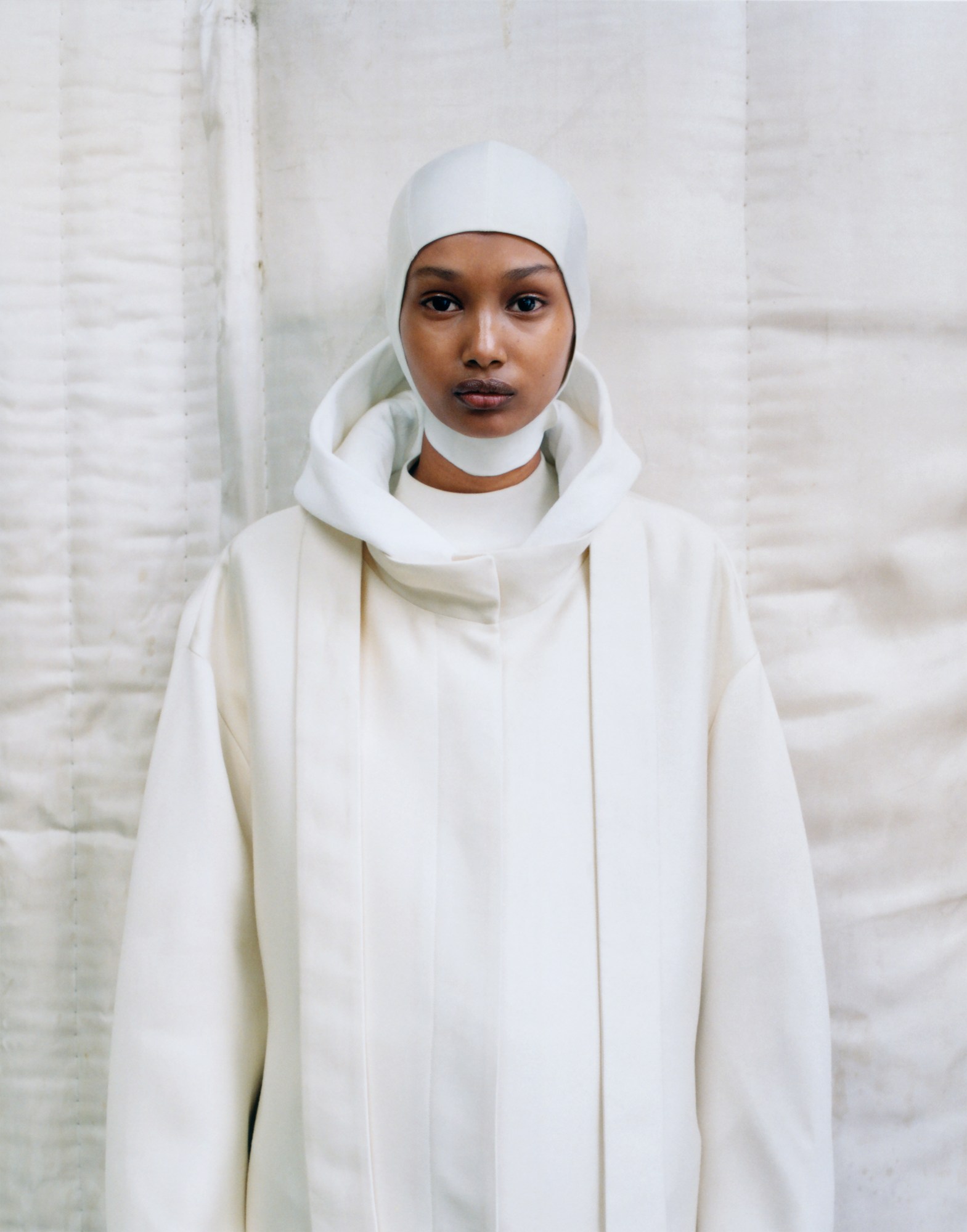
A few months ago, Ugbad made her international modelling debut and instantly became one of the fashion world’s most in-demand new faces. Such a swift ascent can force upstart models into a hyper-controlled, cookie-cutter vision of how they should look and what they are allowed to represent. Yet speaking to Ugbad over the phone, it’s clear her story is different: she is refreshingly lucid, enthusiastic and un-jaded. “This really has been a dream come true for me,” she says. “It’s surreal, amazing, crazy.”
Ugbad first captured the fashion industry’s attention in January, when she was part of Pierpaolo Piccioli’s celebratory vision of black female beauty for the Valentino haute couture spring/summer 19 collection. Moments before Naomi Campbell closed the show, Ugbad, in an explosion of russet-coloured tulle, glided through the halls of Valentino’s atelier on the Place Vendôme to rapturous applause.

Since this debut, Ugbad has continued to captivate the fashion industry. In New York, she opened Marc Jacobs in an oversized leopard print coat, high-waisted slacks and a beanie hat. In Milan, wearing a skull cap and lemon yellow bomber jacket, Ugbad became the first hijab-wearing model to walk for Fendi, in what was also Karl Lagerfeld’s final show. In Paris she made another first, this time at Lanvin, dressed in a floppy tan hat and a zing of clashing prints.
The impact of Ugbad’s resounding success has been to help change some of the wrongly held assumptions about the hijab that have previously led to Muslim women being disenfranchised by the wider fashion conversation; namely, the misconception that the hijab is just the scarf itself, as opposed to a broader, more spiritual idea of a veiling. Ugbad walked the autumn/winter 19 season in a variety of different head coverings — from headscarves to hats — proving once again that the hijab and cutting-edge contemporary style are not mutually exclusive.
Ugbad’s consistent runway presence — and the pioneering presence before her of Halima Aden, who in 2016 became one of the first visible hijab-wearing models walking Western shows – reveal how the variables of inclusivity are moving away from fetishising otherness, and towards normalising ethnic difference.

“Before Halima, I just assumed there was no place for the hijab in the fashion industry,” Ugbad explains, “I have now realised that Muslim women can be anything we want to be.” In a short space of time, the 18-year-old has already proven that Muslim women are not confined to a single identity. “People need to stop assuming and actually just ask questions,” Ugbad says, “because actually Muslim women would really like to share their stories, and to educate people.”
As the world’s second-biggest religion, Islam is an extraordinarily multi-faceted faith, with interpretations varying widely from country to country, person to person. Women wearing the hijab are Islam’s most visible followers, and so are wedged between the double jeopardy of religion and gender. Of the world’s 49 Muslim-majority countries, it is only Saudi Arabia and Iran that legally enforce women to wear the hijab, while in 2017, the European Court of Justice ruled that it was legal for workplaces to ban the wearing of headscarves. The irony of white saviour logic is that if Western secularism polices what a Muslim women can or can’t wear, then somehow Muslim woman are being liberated. “This narrative of all Muslim women not being able to make their own decisions, and being forced to wear the hijab needs to change,” Ugbad says, “A lot of my girlfriends don’t even wear the scarf.”
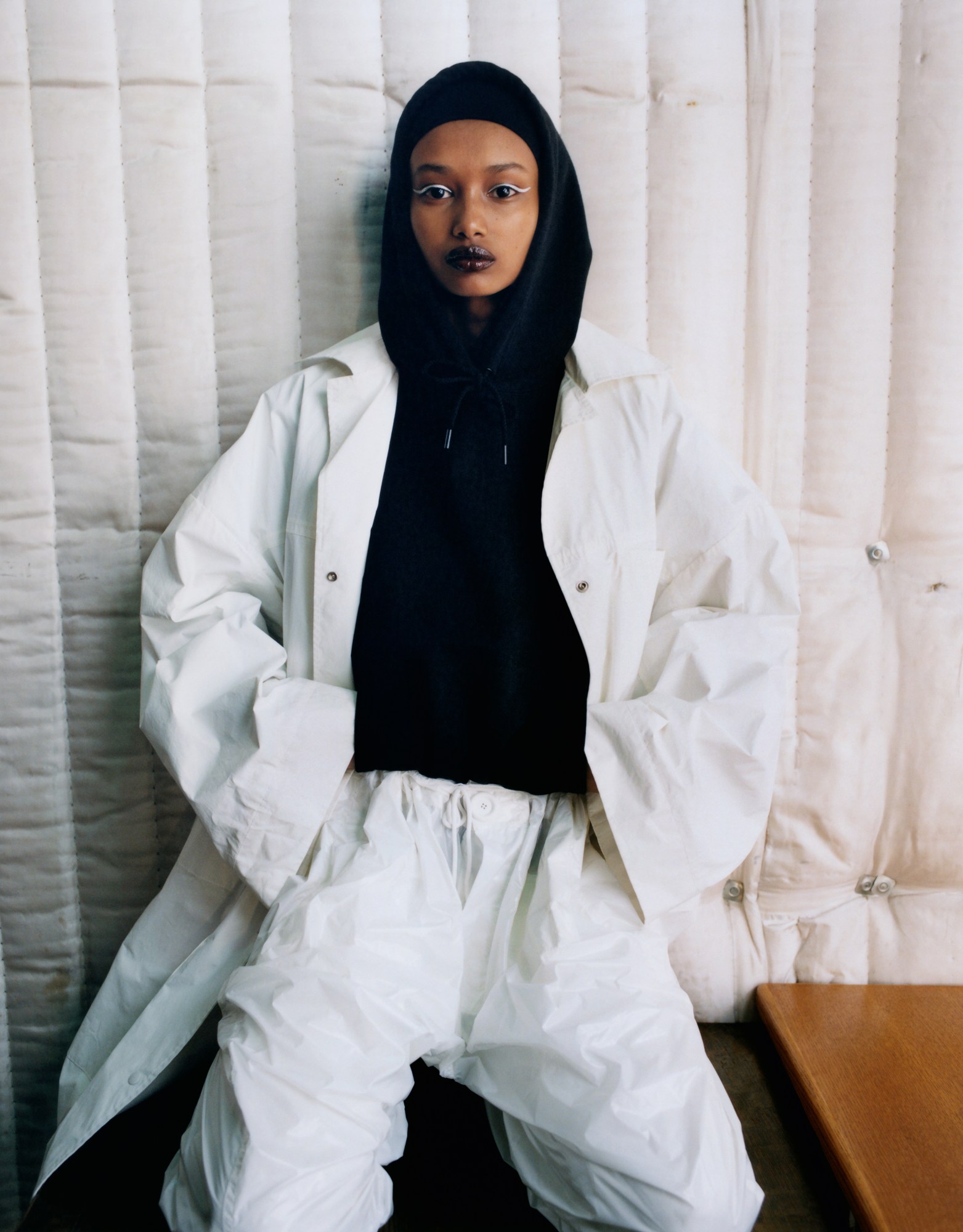
It was at the age of 14 that Ugbad decided she wanted to wear the hijab. “My mom is my biggest inspiration, and when I asked her why she wore the scarf, she said it made her feel modest and comfortable,” Ugbad says. “I related to that and the hijab now feels like it is a part of me. When I wear it, I feel good.” The hijab is, after all, more than just a physical scarf. Its broader meaning can be found in the belief that all Muslims should try to live every day diligently and modestly; shaping the way they act, think, and interact with others. But just as not all Muslim women wear the headscarf, the identity of any Muslim woman who does is not confined to it — and Ugbad wants conversations to move beyond the hijab. “I’m so lucky to have a voice, and I want to use it to challenge the stereotypes of Muslim women,” she says. “People need to get to know Muslim women as individuals.”
This global outlook is how Ugbad wants to define her platform going forward. “In the future I’d like to work with Unicef, who helped us come to the US as refugees; maybe go back to Africa and visit the refugee camp.” But for now, she is preparing for tomorrow’s modelling gig in Tanzania. “I told my Mom last night and we were both freaking out!” Ugbad giggles, “It is going to be my first time going back to Africa since we all left!”
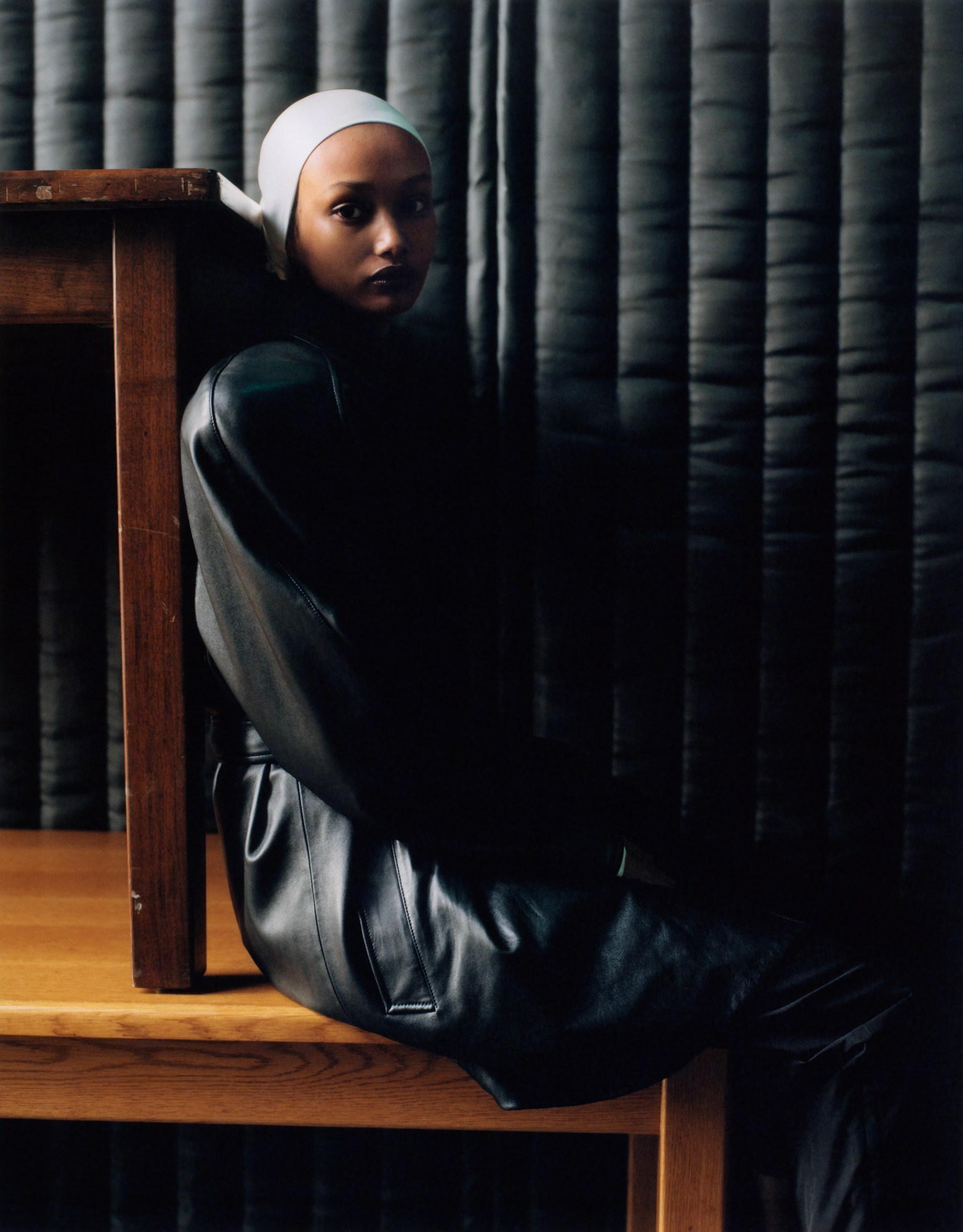
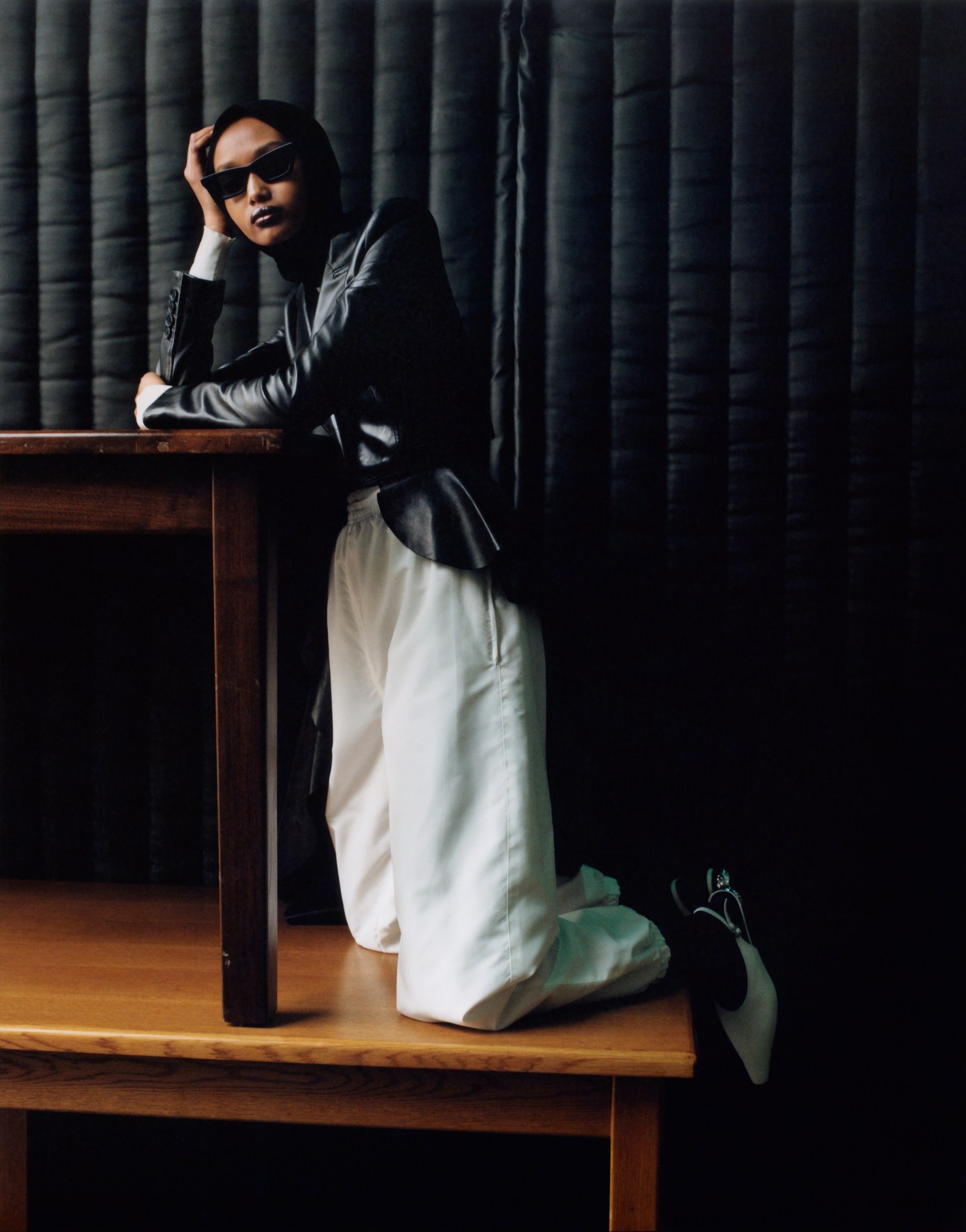
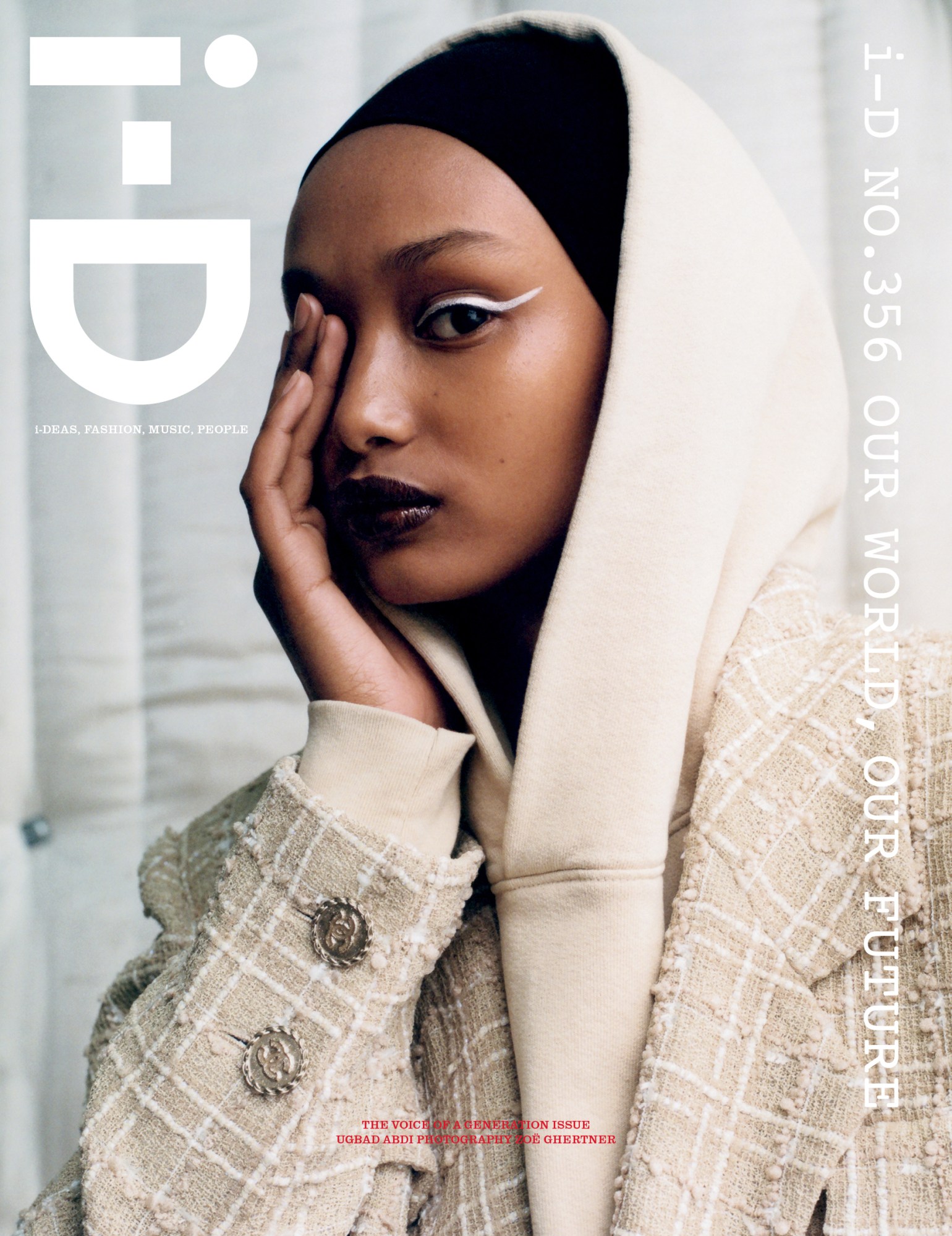
Credits
Photography Zoë Ghertner
Styling Julia Sarr-Jamois
Make-up Fara Homidi at Together using Chanel. Set Design Spencer Vrooman. Photography Assistance Caleb Adams and Milan Aguirre. Styling Assistance Christina Smith and Megan King. Make-up assistance Monica Alvarez. Production Meghan Gallagher at Connect The Dots. Production Co-ordinator Jane Oh at Connect The Dots. Production Assistance Nikki Patrlja and Jeremy Sinclair. Retouching studio rm. Model Ugbad at Next Models.
